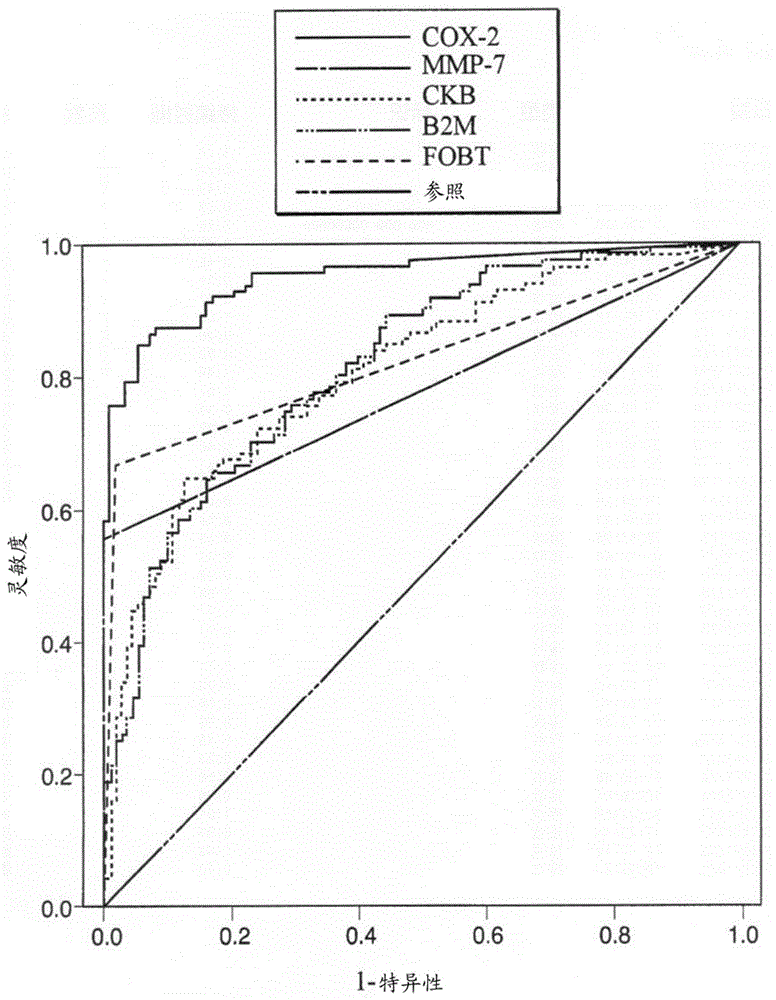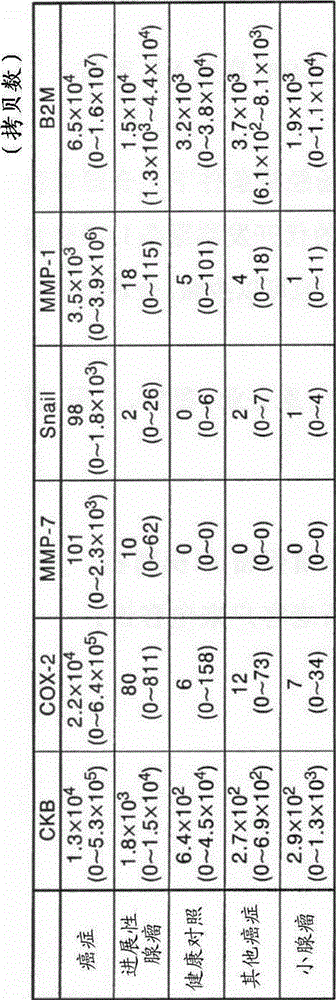Method for detection of colorectal tumor
A detection method and tumor technology are applied in the field of detecting whether the subject whose stool has been collected suffers from colorectal tumor, early cancer detection, and progressive adenoma, and can solve the problems of unreported, low sensitivity, etc.
- Summary
- Abstract
- Description
- Claims
- Application Information
AI Technical Summary
Problems solved by technology
Method used
Image
Examples
Embodiment 1
[0109]
[0110] There were 10 patients with small adenoma of the large intestine (tumor size 5-9 mm), 24 patients with progressive adenoma of the large intestine (tumor size above 10 mm), and 111 patients with colorectal cancer (25 early cancer and 86 progressive cancer) ), 12 patients with upper gastrointestinal cancer (10 patients with gastric cancer, 2 patients with esophageal cancer), and 113 healthy normal people provided feces. Each patient was confirmed by endoscopy and histology. In this example, no neoplastic lesions (but not including adenomatous polyps and hyperplastic polyps less than 5 mm), obvious inflammatory changes in the large intestine, and no hemorrhagic lesions, systemic diseases, and progressive cancers were confirmed. as a healthy person. In addition, among the 111 patients with colorectal cancer, 11 were in stage 0, 24 were in stage I, 37 were in stage II, 25 were in stage III, and 14 were in stage IV. Moreover, prior oral or written informed consen...
PUM
 Login to View More
Login to View More Abstract
Description
Claims
Application Information
 Login to View More
Login to View More - R&D
- Intellectual Property
- Life Sciences
- Materials
- Tech Scout
- Unparalleled Data Quality
- Higher Quality Content
- 60% Fewer Hallucinations
Browse by: Latest US Patents, China's latest patents, Technical Efficacy Thesaurus, Application Domain, Technology Topic, Popular Technical Reports.
© 2025 PatSnap. All rights reserved.Legal|Privacy policy|Modern Slavery Act Transparency Statement|Sitemap|About US| Contact US: help@patsnap.com



